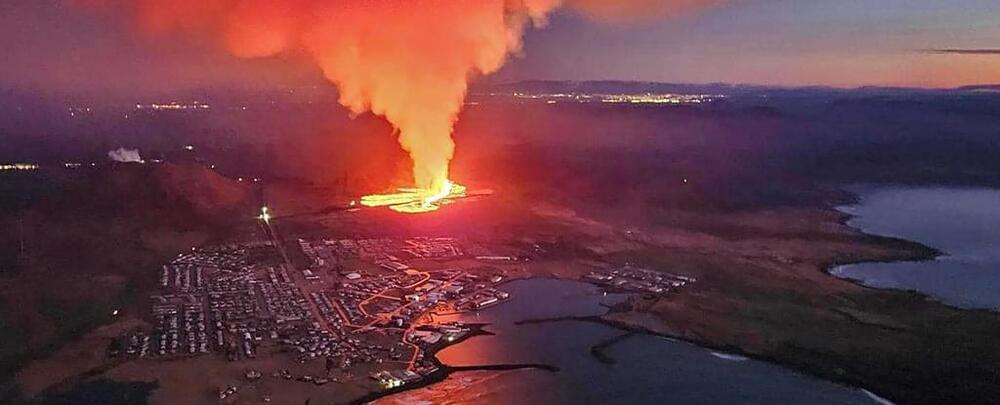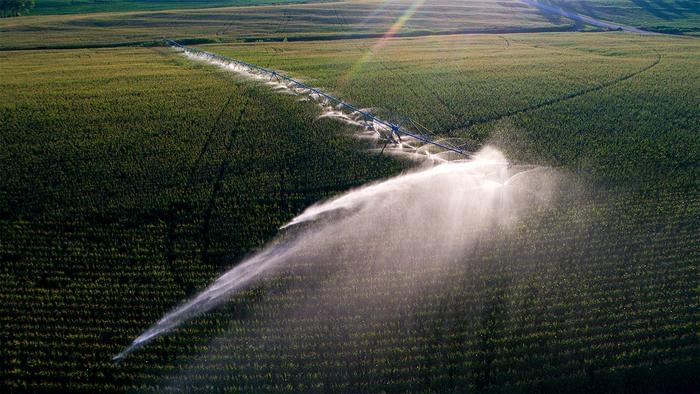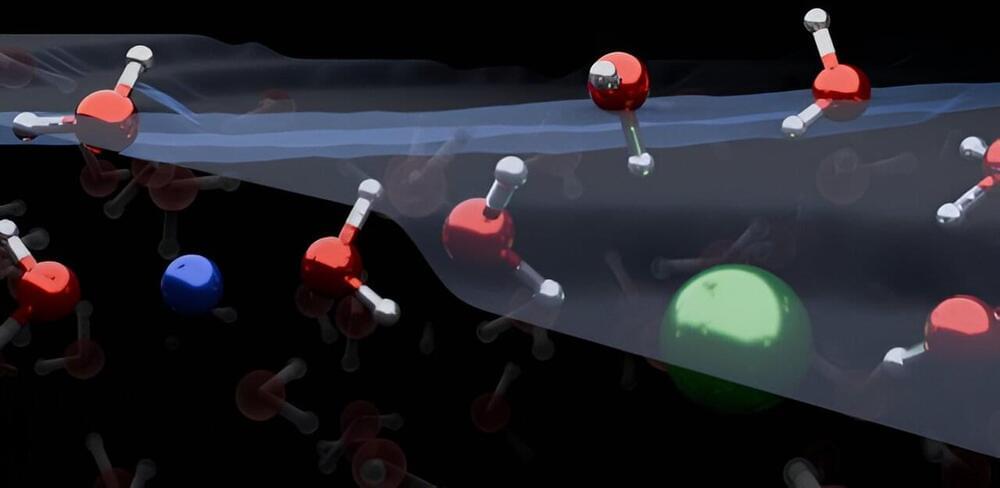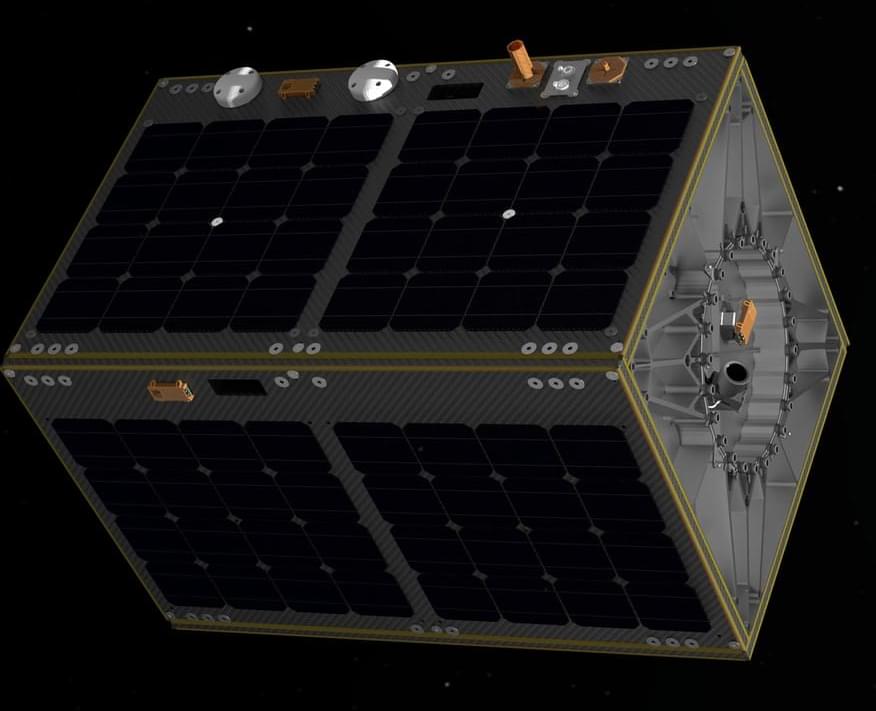Archive for the ‘climatology’ category: Page 29
Jan 19, 2024
New Findings Revolutionize What We Understand About America’s Forests
Posted by Dan Breeden in categories: climatology, sustainability
Forests serve as crucial players in the fight against climate change due to their ability to absorb and store carbon. A recent study, with contributions from researchers at Northern Arizona University, is poised to revolutionize forest conservation strategies across the United States. This study introduces innovative and precise models designed to more accurately estimate and forecast the carbon storage capacity of forests.
The U.S. Forest Service, along with an impressive list of research partners including those at Northern Arizona University, has introduced new National Scale Volume Biomass (NSVB) models that provide a consistent and scientifically accurate method to predict tree volume, biomass (a term that describes the collective mass of the woody parts of trees) and carbon content nationwide.
Jan 18, 2024
Science in 2024: what to expect this year
Posted by Omuterema Akhahenda in categories: climatology, neuroscience, particle physics, science
In this episode, reporter Miryam Naddaf joins us to talk about the big science events to look out for in 2024. We’ll hear about the mass of the neutrino, the neural basis of consciousness and the climate lawsuits at the Hague, to name but a few.
Hear the biggest stories from the world of science | 6 January 2023.
Jan 18, 2024
The Iron-60 Enigma: Decoding Cosmic Explosions on Earth
Posted by Saúl Morales Rodriguéz in categories: biological, climatology, particle physics, space
When large stars or celestial bodies explode near Earth, their debris can reach our solar system. Evidence of these cosmic events is found on Earth and the Moon, detectable through accelerator mass spectrometry (AMS). An overview of this exciting research was recently published in the scientific journal Annual Review of Nuclear and Particle Science by Prof. Anton Wallner of the Helmholtz-Zentrum Dresden-Rossendorf (HZDR), who soon plans to decisively advance this promising branch of research with the new, ultrasensitive AMS facility “HAMSTER.”
In their paper, HZDR physicist Anton Wallner and colleague Prof. Brian D. Fields from the University of Illinois in Urbana, USA, provide an overview of near-Earth cosmic explosions with a particular focus on events that occurred three and, respectively, seven million years ago.
“Fortunately, these events were still far enough away, so they probably did not significantly impact the Earth’s climate or have major effects on the biosphere. However, things get really uncomfortable when cosmic explosions occur at a distance of 30 light-years or less,” Wallner explains. Converted into the astrophysical unit parsec, this corresponds to less than eight to ten parsecs.
Jan 17, 2024
Firm enables 500kW ultrafast wireless EV charging, powers in 15 mins
Posted by Gemechu Taye in categories: climatology, futurism
Revolutionizing electric truck charging, WAVE Charging’s 500kW system achieves a full charge in less than 15 minutes, addressing cold climate challenges.
Wave Charging offers 15-minute charging with 500kW ultra-fast wireless charging, reshaping the future of eco-friendly logistics.
Jan 16, 2024
Experts Confirm: Icelandic Faultline Has Awakened After 800 Years
Posted by Quinn Sena in category: climatology
A volcanic eruption that has engulfed homes in an Icelandic fishing port confirms that a long-dormant faultline running under the country has woken up, threatening to belch out lava with little warning for years to come, an expert warned on Tuesday.
Glowing lava swallowed several homes on Sunday at the edge of the town of Grindavik, southwest of the capital Reykjavik.
The fishing town was mostly evacuated due to threat of an eruption last month and the most recent volcanic activity has since eased, authorities in the North Atlantic nation said on Monday.
Jan 16, 2024
Nebraska-Led Study Reveals Impact of Groundwater Depletion on Crop Yields from Drought and Dry Conditions
Posted by Laurence Tognetti, Labroots Inc. in categories: climatology, economics, sustainability
How can the increased threat of drought and drier conditions from climate change impact groundwater (aquifer) usage, and ultimately, food production? This is what a recent study partially funded by the U.S. Department of Agriculture and published in Nature Water hopes to address as a team of researchers led by the University of Nebraska-Lincoln investigated how decreasing aquifer levels result in irrigation challenges for farmers now only in the United States but throughout the world.
This study holds the potential to help scientists, farmers, and policymakers better understand the appropriate steps to manage irrigation levels as climate change continues to lead to increased drought and drier environmental conditions across the globe.
“In terms of things that let you address food security under extreme conditions — in particular, drought and climate change — we really can’t do without irrigation,” said Dr. Nick Brozović, who is a professor of agricultural economics at the University of Nebraska–Lincoln and a co-author on the study. “If we want to feed the world with high-quality, nutritious food and a stable food supply, we need to irrigate.”
Jan 15, 2024
Water molecule discovery contradicts textbook models
Posted by Paul Battista in categories: chemistry, climatology
Textbook models will need to be re-drawn after a team of researchers found that water molecules at the surface of salt water are organized differently than previously thought.
Many important reactions related to climate and environmental processes take place where water molecules interface with air. For example, the evaporation of ocean water plays an important role in atmospheric chemistry and climate science. Understanding these reactions is crucial to efforts to mitigate the human effect on our planet.
The distribution of ions at the interface of air and water can affect atmospheric processes. However, a precise understanding of the microscopic reactions at these important interfaces has so far been intensely debated.
Jan 10, 2024
Technique could efficiently solve partial differential equations for numerous applications
Posted by Cecile G. Tamura in categories: chemistry, climatology, engineering, information science, physics
In fields such as physics and engineering, partial differential equations (PDEs) are used to model complex physical processes to generate insight into how some of the most complicated physical and natural systems in the world function.
To solve these difficult equations, researchers use high-fidelity numerical solvers, which can be very time consuming and computationally expensive to run. The current simplified alternative, data-driven surrogate models, compute the goal property of a solution to PDEs rather than the whole solution. Those are trained on a set of data that has been generated by the high-fidelity solver, to predict the output of the PDEs for new inputs. This is data-intensive and expensive because complex physical systems require a large number of simulations to generate enough data.
In a new paper, “Physics-enhanced deep surrogates for partial differential equations,” published in December in Nature Machine Intelligence, a new method is proposed for developing data-driven surrogate models for complex physical systems in such fields as mechanics, optics, thermal transport, fluid dynamics, physical chemistry, and climate models.
Jan 9, 2024
Muon Space tapped by Air Force for cloud characterization from space
Posted by Saúl Morales Rodriguéz in categories: business, climatology, satellites
WASHINGTON — The startup Muon Space announced Jan. 9 it will explore the use of climate-monitoring satellites to capture cloud characterization data for the U.S. Air Force.
The Mountain View, California-based company, founded in 2021, is developing small satellites to monitor Earth’s climate and ecosystems.
Under a Small Business Innovation Research Phase 1 contract from the U.S. Air Force, Muon Space “will perform a feasibility study to determine the benefit of modifying its multispectral electro-optical infrared (EO/IR) instrument to support the Department of Defense’s cloud characterization observation capability,” the company said.

















